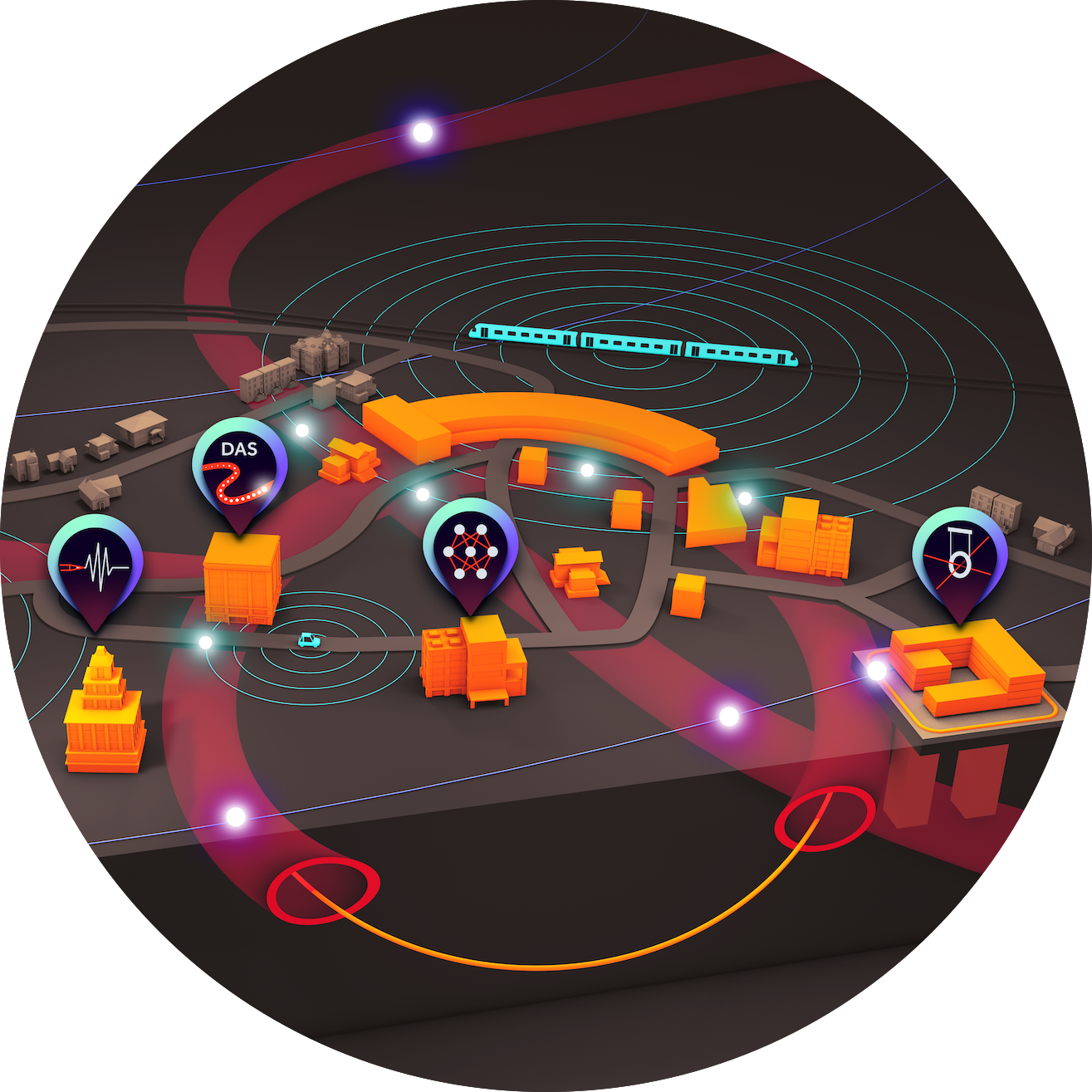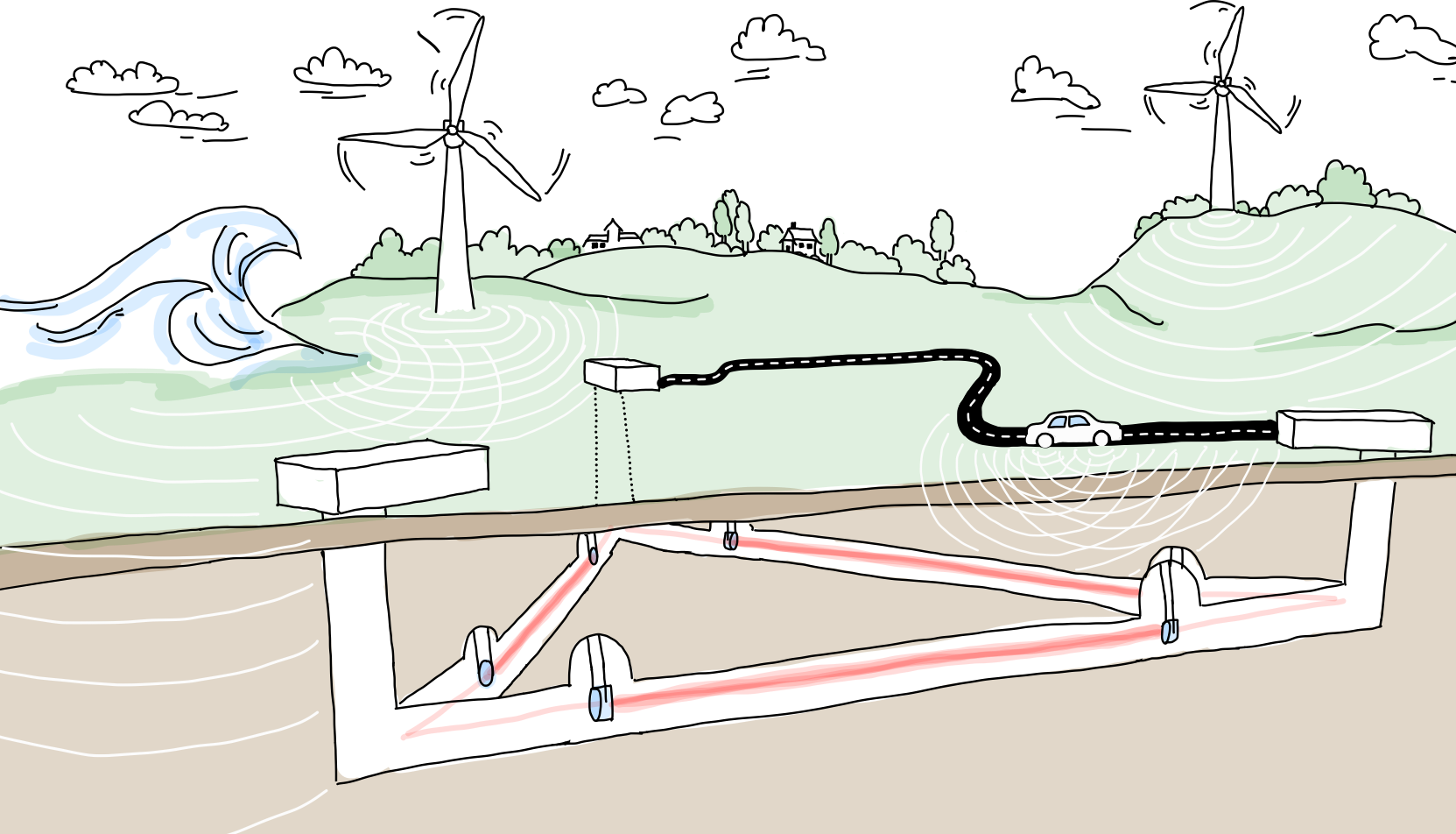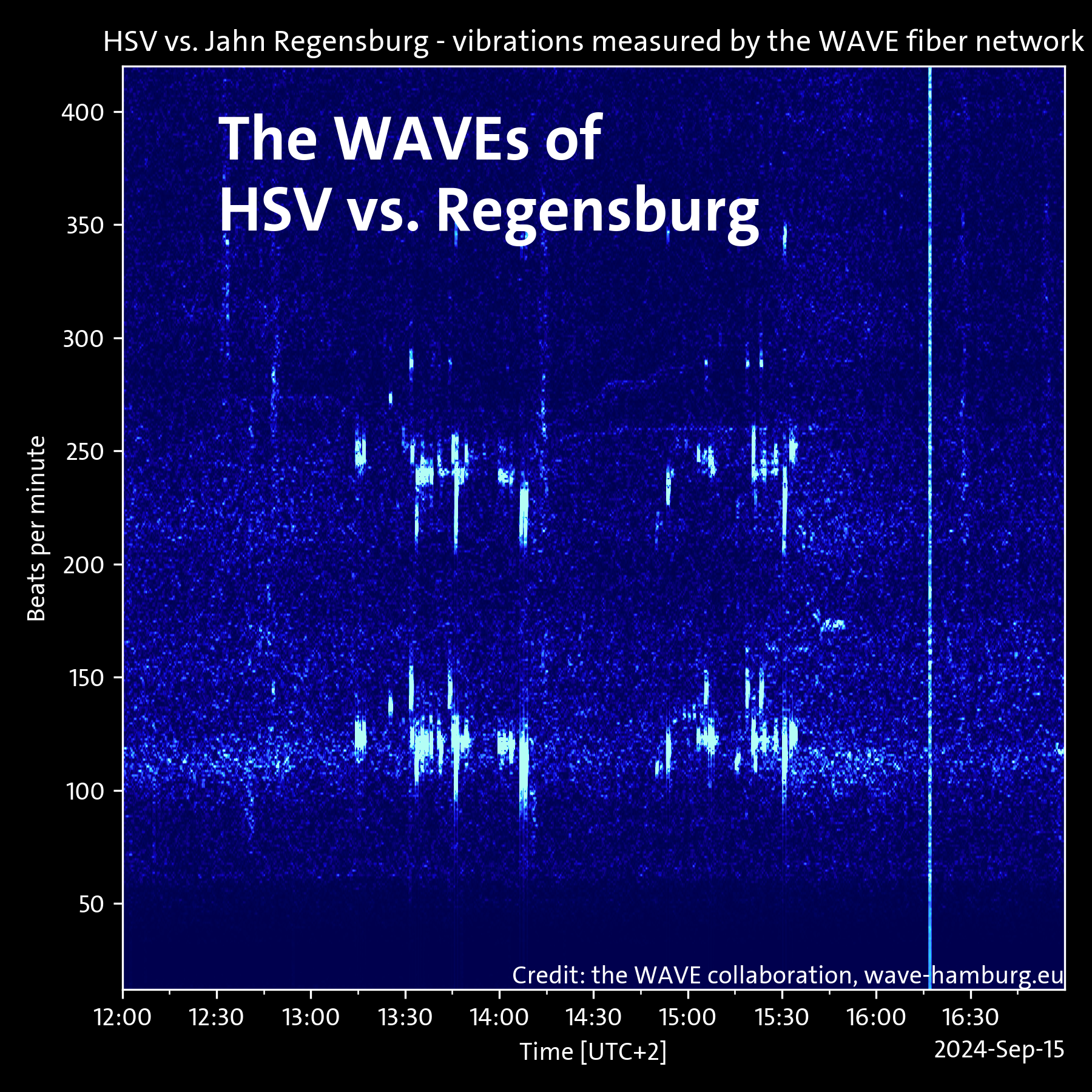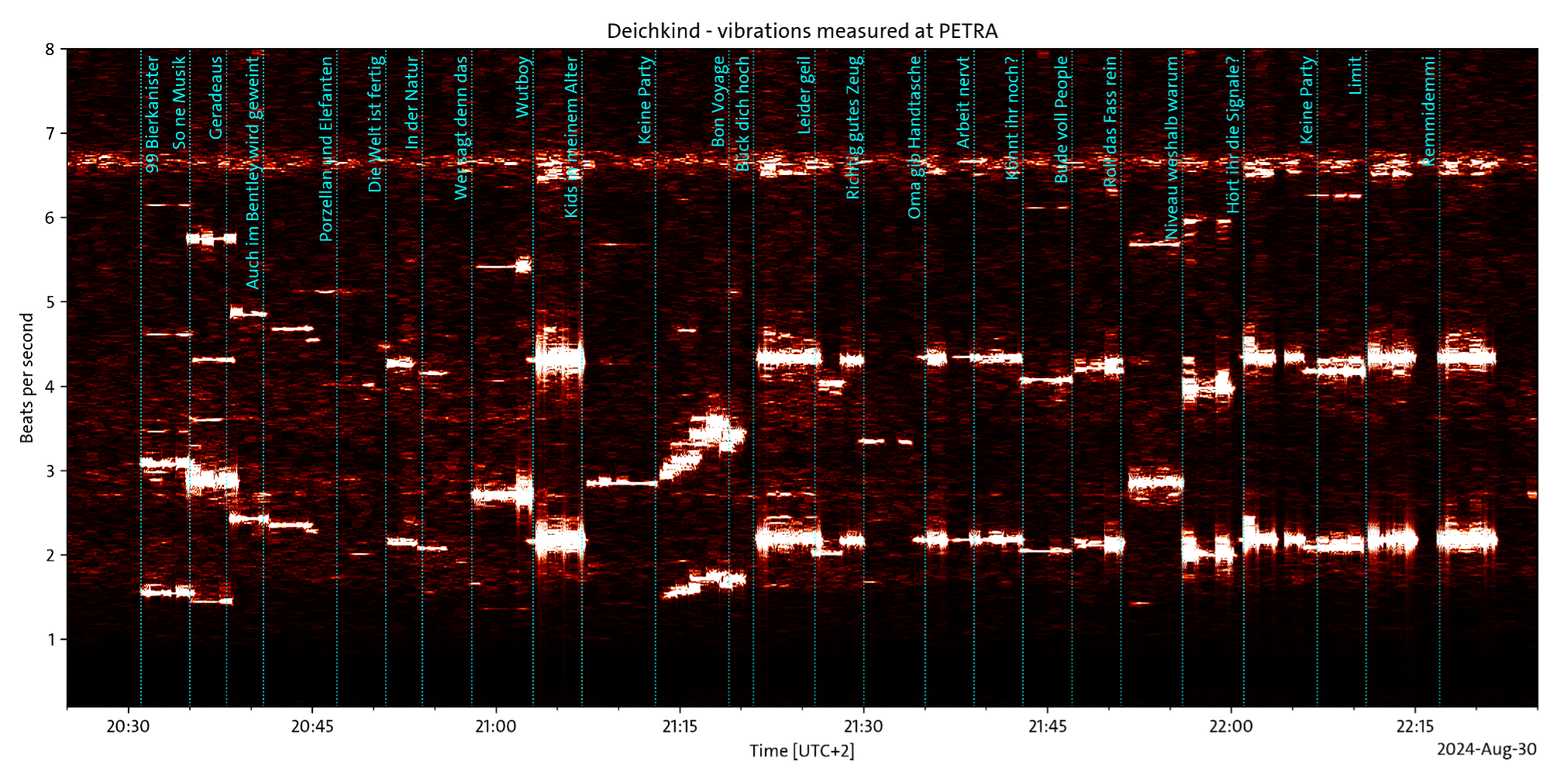The two towers: Demolition of the Tower in Moorburg Coal Power station
In November 2024, the double towers of a power station in Moorburg, in the south of Hamburg, were demolished. The towers were demolition utilising explosives at the base, making them fall in one piece. As the total weight of the towers was 2300 tons, the force excerted on the ground was significant, creating seismic waves.
A video of the demolition was streamed live by Hamburg Hafen Live on Youtube:

The station lies around 10 km from the DESY/Campus Bahrenfeld, where the WAVE Network is located. Considering both the urban noise of Hamburg and the river Elbe in between, this is quite a significant distance. Nevertheless, we are able to see the towers falling onto the ground in the data of the WAVE Network.

The Waterfall plot above shows how the fibre experiences increased strain which travels in ripples thourgh the campus. In the waterfall plot, the time is one the y-axis, while the section of the fibre in the WAVE Network is the x-axis. Every line denotes 1 m of fibre. Through this, we can see how the signal and in which direction it travels. As the fibre is mirrored, the picture appears twice in the plot.
This plot is filtered, meaning only certain frequency components of the data are taken into account. This is done to lower the influences of surrounding noise. The process is similar to peeling back layers of dirt to reveal a picture underneath, only it is done with data.




